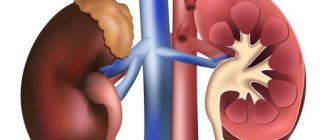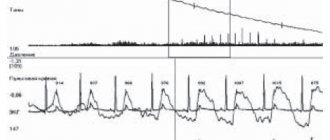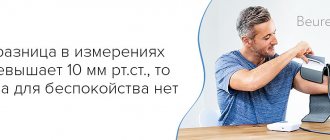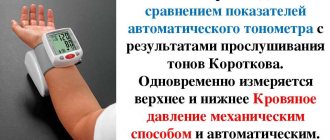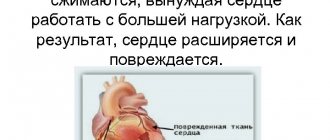Dizziness is one of the symptoms that attracts the attention of people whose blood pressure regularly fluctuates. It is by this sign that one can recognize the onset of another deterioration in well-being, provoked by changes in tonometer readings.
In order to take the necessary measures in time, you need to know at what pressure you feel dizzy, what additional symptoms accompany the condition, and what ways to solve the problem exist. This material will discuss exactly this, because hypotension and hypertension in the modern world are diagnoses that are made more and more often, regardless of the age and gender of patients.
Dizziness as a sign of hypotension
Dizziness with low blood pressure is caused by a lack of oxygen in the brain tissue due to a slowdown in the functioning of the hematopoietic system. At the same time that a person feels dizzy, he experiences the following symptoms of exacerbation of hypotension:
- pain in the forehead area that is pressing in nature;
- weakness and loss of performance;
- trembling of hands and feet;
- cold sweat;
- panic attack;
- ringing and squeaking in the ears.
These manifestations of low blood pressure occur for a variety of reasons. In women, the cause may be the menstrual cycle or pregnancy, aggravated by iron deficiency anemia. Blood pressure also drops with chronic lack of sleep, when the body is not provided with a full 8-hour rest.
Low blood pressure (BP) can also be caused by dietary errors, when the body does not receive the necessary nutrients to ensure adequate oxygen access to the brain and internal organs. Also, deterioration of health can occur as a result of poisoning with low-quality and expired products, chemicals, and alcoholic beverages. The situation worsens when a viral or bacterial infection penetrates into a weakened body.
Hypotonic people regularly suffer from weather changes; this phenomenon is called meteosensitivity. The pressure drops especially noticeably in such people when the weather suddenly changes from sunny to rainy or when magnetic storms begin. If during this period a person experienced a stressful or conflict situation, during which there was a significant increase in adrenaline in the blood, after calming down it falls and aggravates the hypotensive state.
Also, a decrease in blood pressure levels is observed after taking certain groups of medications or may be due to an overdose of medications. In this case, you need to monitor the condition of the hypotensive person and consult a doctor in time if more dangerous signs are added to dizziness and weakness. For example, fainting, vomiting and seizures.
Causes of dizziness
Control over the position of the body in space is ensured by the joint action of three anatomical systems of the body:
- vestibular. The vestibular apparatus is located deep in the skull and includes sensitive receptors that respond to the movement of the body in space;
- visual. The eyes provide basic information about our position in relation to objects in the world around us and the position of parts of our body in relation to each other.
- peripheral sensory receptors found in muscles, joints and bones, which also provide the brain with information about the position of various parts of the body.
Stimulation of one or more of these systems can lead to dizziness (as, for example, dizziness occurs as a result of riding on a merry-go-round). If dizziness appears without any external reason, then the nature of such dizziness is obviously pathological. Most often, the cause of true (or, as it is also called, systemic) dizziness is a violation of the vestibular apparatus.
Hypertension and dizziness
If low blood pressure is less common and less dangerous, then signs of hypertension, even at an initial stage, appear in many people, regardless of age and gender. Arterial hypertension develops not only in older people, in whom it is caused by the natural aging of the body and the loss of the blood vessels' previous tone.
A patient aged 30–35 may also suffer from regular pressure surges due to the following negative factors:
Can osteochondrosis affect blood pressure?
- disturbances in the functioning of the endocrine system and the metabolic process;
- benign and malignant neoplasms in the cavity of the skull and brain;
- pathologies of the renal system, when the condition of a hypertensive patient is worsened by fluid retention in the body and the development of tissue swelling;
- diseases of the cardiovascular system;
- osteochondrosis of the cervical spine;
- the result of stressful and conflict situations;
- obese weight.
Especially the symptoms of dizziness and a sharp headache appear when several of the listed factors are combined. And the more severe the jumps in blood pressure will be in people who are addicted to bad habits - drinking alcohol and smoking.
Increased pressure to critical tonometer levels threatens with dangerous consequences in the form of heart attack, stroke, thrombosis of the venous network, pulmonary edema and rupture of an aneurysm. Therefore, every hypertensive patient should know what other signs, in addition to dizziness, are accompanied by a sharp increase in blood pressure (after all, a tonometer is not always at hand to record accurate indicators).
This is nausea with the urge to vomit, sharp and throbbing pain in the temples, which radiates to the back of the head and back of the neck, and tinnitus. During the next attack, a person first feels lethargy and weakness; as the pressure increases, an increased heart rate and shortness of breath occur, and the arms and legs swell. Another jump in blood pressure can be recognized by a person’s reddened face, as well as the skin of the neck and collar area.
If dizziness is caused by an increase in blood pressure in the network of arteries, and the heart cannot cope with the increased load, you need to remember the listed symptoms and seek medical help in time. This will help avoid dangerous complications such as cerebral hemorrhage and heart attack.
Treatment of dizziness with high and low blood pressure
To overcome a symptom, you need to get rid of its cause. Therefore, it is not the dizziness itself that needs to be treated, but what caused it. Only a doctor can properly diagnose and treat dizziness. It is also important that as the disease develops, one form of the disease may replace another or be combined with it, so the selection of medications should be entrusted to a specialist. [2]
However, you shouldn’t sit idly by either! Check your blood pressure regularly, get general blood and urine tests, as well as blood sugar and lipid tests, walk more, stop smoking and alcohol, and follow a diet for dizziness. In addition, it is important to avoid stressful situations and try to worry less. [2]
Bibliography:
1. Manvelov L. Measure blood pressure correctly // Science and life. – 2007. – No. 10. — https://www.nkj.ru/archive/articles/11810/ (Access date: 06.25.2016).
2. Kalinkskaya E.I. Hypertension - a symptom or a disease? // Science and life. – 1998. – No. 2. — https://www.nkj.ru/archive/articles/10301/ (Access date: 06/25/2016).
3. Manvelov L., Kadykov A. Vascular diseases of the brain. It can all start with a headache // Science and life. – 2007. – No. 2. — https://elementy.ru/nauchno-populyarnaya_biblioteka/430450/Sosudistye_zabolevaniya_mozga_Vsyo_mozhet_nachatsya_s_golovnoy_boli (Access date: 06/25/2016).
4. Zamergrad M.V. “Vascular” dizziness // RMZh. – 2007. – No. 9. — https://www.rmj.ru/articles/kardiologiya/Sosudistoe_golovokrughenie/ (Access date: 06/25/2016).
Typical symptoms in older people
Pressure and dizziness, as it has now become clear, are closely related - this sign allows you to recognize the onset of the next crisis, be it mild or intense. In older people, severe dizziness is more often associated with a sharp jump in blood pressure rather than with a drop. With age, the body wears out, blood vessels lose their former tone, the heart muscle is depleted, as a result of which the pressure increasingly stops at around 150/110.
Dizziness in an elderly person can occur even with normal systolic, that is, upper, pressure readings, but with a strong gap between the upper and lower readings.
This difference is called pulse pressure and is normally 30–40 mmHg, for example, 120/80 or 110/70. People over 60–65 years of age are increasingly diagnosed with heart failure, endocarditis, anemia and other problems with the cardiovascular system. Therefore, a sharp increase in pulse pressure in elderly patients is accompanied by dizziness, pain in the temples and weakness.
Clinical picture of dizziness in adolescents
During this time period between 13 and 17 years, when the body is rapidly changing, normal pressure is 130/70, but it can rise or fall for no apparent reason. Young people complain of dizziness, flushing of the face, increased heart rate, pain behind the sternum and in the epigastrium. If dizziness appears after high blood pressure, and the teenager feels weakness and loss of strength, and even more so if such symptoms appear regularly, it is worth showing him to a doctor to prevent complications.
A common reason for increased blood pressure in adolescents who develop normally mentally and physically is puberty.
BPPV
BPPV is diagnosed in 17% of patients complaining of dizziness and is the most common cause of its occurrence. Moreover, the frequency of its occurrence increases in proportion to age, and in women it occurs 2 times more often. This is a disease in which otoliths move into the semicircular canals of the inner ear.
Otoliths are calcium carbonate crystals normally located in the otolithic membrane of the inner ear.
With BPPV, attacks are usually triggered by head movements, especially at night, when the patient cannot control himself. There are frequent situations when dizziness occurs after turning in a dream or getting up/getting out of bed. In this case, dizziness begins acutely, but lasts less than a minute, although it may be accompanied by nausea and vomiting, nystagmus. It is not associated with hearing loss, noise, or ringing in the ears.
The duration of the attack usually does not exceed several minutes.
In most cases, the causes of BPPV cannot be determined. Only in certain situations is its development associated with head injuries, ear surgeries, or previous diseases of the inner ear.
But on the other hand, BPPV does not require specific treatment and, as a rule, goes away on its own in a few weeks or months. Patients are only taught special maneuvers to facilitate the release of particles from the affected semicircular canal to eliminate dizziness. But before they are carried out, it is imperative to consult a doctor who will confirm or deny the presence of BPPV and determine its type. Otherwise, as well as if the technique is violated, your condition may worsen.
There are more than 5 different maneuvers to relieve an attack of dizziness due to BPPV. The choice of which one will be most effective for an individual patient depends on which part of the labyrinthitis his otoliths move to. In most cases, the Eple maneuver is recommended. Its essence is as follows:
- turn the head 45° towards the affected ear and lie on your back (this may be accompanied by increased dizziness);
- the head is turned sharply towards the healthy ear so that it is at an angle of 45°;
- continue turning to the healthy side with the whole body so that at the end point the face is directed downward;
- rise to a sitting position, maintaining a head tilt of 45°.
You should remain in each position for about 1 minute, and change them as abruptly as possible.
In half of the cases, correct implementation of therapeutic maneuvers allows for long-term elimination of BPPV symptoms. Although 25-50% of patients experience relapses. In such situations, repeated maneuvers are indicated.
First aid measures
If a sudden feeling of dizziness is caused by high blood pressure, the patient's condition can quickly worsen. When the tonometer readings reach 180/140, hemorrhagic convulsions may begin, many patients lose consciousness, at such moments the risk of developing cerebral hemorrhage and rupture of the heart muscle increases significantly.
Therefore, the patient urgently needs first aid:
- put the person in a horizontal position, if he is conscious, raise his legs above head level;
- unbutton your clothes, loosen your belt, free your neck and wrists;
- ensure the flow of oxygen by opening the windows in the room;
- give the patient an antihypertensive tablet if you have a tonometer at hand and it is possible to accurately determine that your health has worsened due to increased blood pressure;
- after reducing pressure and eliminating dizziness, pain in the temples, nausea and vomiting, monitor the patient, measuring blood pressure every half hour.
If a person loses consciousness during an attack of dizziness and a surge in blood pressure, you should not put him on the bed, you need to put him on a chair. Also, ensuring there is an influx of fresh air into the room, wash your face with cold water and call an ambulance.
If you feel dizzy often
Benign paroxysmal positional vertigo (BPPV, otolithiasis)
With BPPV, attacks of dizziness last a few seconds, less often minutes, and sometimes nausea occurs. This usually happens when a person lies down and then gets up, or if he throws his head back. The reason for this condition is that in the labyrinth - an important part of the vestibular apparatus - calcium carbonate crystals appear, which move, irritate the receptors, and the brain ultimately receives conflicting signals. To confirm this diagnosis, the doctor, after talking with the patient, performs a Dix-Halpike test.
BPPV is treated with a repositioning maneuver in the Brandt-Daroff, Semont, or Epley space. In most cases, there is little point in using special medications to treat dizziness - this is done only if the attacks are very frequent.
Vestibular neuronitis
Vestibular neuronitis begins abruptly, a person constantly feels dizzy, feels nauseated, vomits, and finds it difficult to walk. The doctor may also notice spontaneous vestibular nystagmus, and a positive horizontal head thrust test will indicate this disease.
The hearing is preserved (if not, then we are talking about another disease - labyrinthitis). Why do these symptoms occur? Vestibular neuronitis is a viral or bacterial inflammation of the vestibular ganglion, that is, the nerve ganglion in the internal auditory canal. There are very few effective antiviral drugs, and all of them are aimed at combating specific viruses. And since it is impossible to understand what exactly caused vestibular neuronitis, we can only wait: the worst period lasts no more than 1–2 days. The healing process can only be accelerated with the help of steroidal anti-inflammatory drugs.
Meniere's disease
With Meniere's disease, repeated attacks of severe dizziness last for minutes or even hours, on one side there is noise and pressure in the ear; Nystagmus, nausea, vomiting occurs, and he loses his balance. During audiometry (test of hearing acuity), the doctor will detect hearing impairment at low frequencies. This disease may take months or years to appear. It occurs due to increased pressure of endolymph (fluid) in the inner ear, which disrupts its function. If the diagnosis is confirmed, the doctor may prescribe diuretics (diuretics - hydrochlorothiazide, acetazolamide) and a low-salt diet. If the attacks significantly reduce your quality of life, your doctor will also prescribe antiemetics (domperidone, metoclopramide), benzodiazepines (diazepam, lorazepam), or antihistamines (dimenhydrinate, diphenhydramine).
Hunt syndrome
Acute dizziness and/or hearing loss, unilateral paralysis of the facial muscles, ear pain, rashes in the ear canal and auricle - this is how Hunt's syndrome manifests itself, damage to the geniculate ganglion (part of the facial nerve) by herpes zoster virus. Treatment uses a specific antiviral drug, acyclovir, and corticosteroids.
Maze Shaking
If the labyrinth was damaged during a head injury, this will manifest itself as dizziness, nausea, vomiting and an inability to maintain balance. Gradually, over days or months, this condition passes. However, benign paroxysmal positional vertigo or, in rare cases, Meniere's disease may then occur.
Migraine vertigo (vestibular migraine)
Typically, migraine vertigo attacks last minutes or hours. In this case, in addition, visual disturbances typical of a migraine aura often occur (flashes, dots, rainbow stripes flashing before the eyes, narrowing of the visual fields, etc.), fear of light and sound. However, headaches do not always occur. A person may notice that such a condition is provoked, like a regular migraine, by certain foods, smells, situations, etc. In this case, a neurologist can prescribe drugs for prevention: triptans or tricyclic antidepressants in small doses, antiepileptic drugs, beta blockers. There are also special exercises for vestibular rehabilitation.
Dizziness with multiple sclerosis
With multiple sclerosis, the membranes of nerve fibers are affected in humans, and this causes various disorders, mainly motor ones. However, in 20 percent of cases, this disease manifests itself as attacks of dizziness, and resembles vestibular neuronitis. However, the symptoms last longer - several days or weeks. The doctor may prescribe a short course of corticosteroids to help the patient feel better.
Transient ischemic attack (TIA)
This condition is very similar to a stroke, but it resolves on its own and does not damage brain tissue. In addition to dizziness and loss of balance, a person may experience numbness on one side of the body, weakness, speech may be slurred, confusion may occur, double vision or loss of vision, memory loss, difficulty swallowing, and urinary or fecal incontinence. All this happens due to the fact that a thrombus or embolus (a particle of a blood clot, atherosclerotic plaque, altered heart valve) clogs a brain vessel for several minutes or hours. Since patients with TIA have an increased risk of stroke, if these symptoms occur, be sure to consult a doctor as soon as possible.
Perilymphatic fistula
Perilymphatic fistula occurs after traumatic brain injury, barotrauma (damage due to a sharp change in atmospheric pressure) or heavy load. It manifests itself as dizziness and/or hearing loss after sneezing, heavy lifting, straining, coughing and loud noises. This happens due to damage to the membranes in the middle and inner ear. It is quite difficult to diagnose this condition; for this, the doctor prescribes a computed tomography scan. In some cases, a perilymphatic fistula goes away on its own, but to speed up the process, you need to stay in bed, lie on the bed with the head of the bed raised, and avoid straining. However, if there is no effect after a few weeks, you should resort to other methods of treatment, possibly requiring surgery.
Semicircular canal dehiscence syndrome (Minor's syndrome)
Dizziness with Minor syndrome is provoked by coughing, sneezing, loud sounds, and the Valsalva maneuver. Nausea or instability may also occur during short episodes of dizziness. In some patients, hearing deteriorates (this is manifested on the audiogram as an air-bone interval). In this disease, the bone covering the superior semicircular canal becomes thin or even disappears, causing symptoms. It should be said, however, that this syndrome is extremely rare.
Cogan syndrome
This rare autoimmune disease manifests itself as interstitial keratitis, that is, clouding in the middle and deep layers of the outer layer of the eyeball - the cornea. The disease is also expressed in attacks similar to those of Meniere's disease (dizziness, nausea, vomiting, noise and ringing in the ears, hearing loss, loss of balance). An illusion of vibration of surrounding objects (oscillopsia) may occur. Steroids and other immunosuppressants are prescribed for this disease.
Rotational occlusion of the vertebral artery (archer syndrome)
With this rare disease, dizziness appears when a person turns his head in one direction (less often in both): the vertebral artery is compressed, which leads to this condition. Perhaps the reason for this is a degenerative disease of the spine or congenital foraminal stenosis (narrowing of the intervertebral foramen). Treatment options for the disease range from gentle treatment to conservative and even surgical intervention.
Wallenberg syndrome
Sudden dizziness and imbalance are symptoms of Wallenberg syndrome. Double vision, weakness in one hand, constriction of the pupil, and impaired temperature and pain sensitivity on one side may also occur. All this occurs due to blockage of the posterior inferior cerebellar or vertebral artery, as well as traumatic dissection of the vertebral artery. Treatment in this case is symptomatic.
Cerebellar stroke
With a stroke of the cerebellum (the part of the brain responsible for coordinating movements and maintaining balance), sudden dizziness occurs with nausea and vomiting, nystagmus, impaired movement of the limbs, and the person falls to one side. This usually happens to people over 60 and those at increased risk of stroke (people with diabetes or hypertension). To confirm the diagnosis, the doctor will urgently perform a computed tomography or magnetic resonance imaging scan.
Episodic ataxia type 2
This genetic disease manifests itself in childhood and adolescence: the child experiences severe dizziness, movement disorders, nausea, and vomiting. Attacks can last from several hours to several days. To treat an acute condition, your doctor will prescribe acetazolamide.
TREATMENT OF SYSTEMIC VERTIGO
If vertigo lasts more than a few hours or days, a person's quality of life can be severely affected. Therefore, the doctor prescribes medications that reduce symptoms. First of all, antihistamines are used (dimenhydrinate, diphenhydramine), as well as drugs that in addition have a sedative effect - antiemetics (domperidone, promethazine, metoclopramide, ondansetron) and benzodiazepines (diazepam, lorazepam, clonazepam, alprazolam).
Rehabilitation can also be effective - special exercises that will help cope with problems of the vestibular system. The most useful thing is not to delay the start of classes.
Treatment of regular attacks
What to do during the next attack of dizziness is now clear. But what is the right thing to do if such symptoms occur on a regular basis? First of all, you need to visit a cardiologist to find out the cause of this condition. Depending on what provokes regular pressure surges in one direction or another, measures will be taken to relieve the condition, medications or physiotherapeutic procedures will be prescribed.
General principles of treatment when regular dizziness occurs due to high blood pressure or hypotensive crisis include the following algorithm of actions:
- Establish a daily routine and provide the body with proper rest. If a person is constantly lacking sleep, sleeps less than 7–8 hours a day, or suffers from chronic fatigue, dizziness will bother him not only during surges in blood pressure, but also simply throughout the day.
- Prevent the occurrence of stressful and conflict situations. As a result of constant nervous overstrain at work or at home, blood pressure levels can constantly increase or decrease. It is not without reason that doctors say that many diseases, especially hypertension, arise from nerves.
- Take the pills prescribed by your doctor. If a hypertensive patient does not follow the doctor’s instructions and only stop acute attacks of hypertension, dizziness and pain in the temples will become his constant companions. Arterial hypertension is a disease that requires constant therapy, and not occasionally.
- Do not overwork the body, providing it with adequate physical activity daily. It is better to carry out assigned tasks at home and at work slowly, without overloading the body physically and mentally, then it will be possible to ensure a stable blood pressure level.
- Eat properly. Hypertensive patients should exclude fatty and salty foods and drinks with a high caffeine content from their diet. Hypotonic patients should eat more protein foods. People with low and high blood pressure benefit from vegetables, fruits, lean meats and fish; such nutrition will help maintain normal body weight and provide the brain with oxygen.
If dizziness occurs regularly and is accompanied by fluctuations in blood pressure, it is a good idea to keep a diary in which to record each exacerbation. It is also necessary to record the circumstances preceding the crisis in order to analyze them and eliminate them in a timely manner.
Meniere's disease
According to statistics, Meniere's disease is diagnosed in 10% of patients who complain of dizziness. This is a disease of the inner ear, in which there is an increase in the volume of labyrinthine fluid and an increase in pressure within the labyrinthitis. Most often it occurs after 30 years.
Meniere's disease is characterized by episodes of systemic dizziness, which is associated with a progressive decrease in hearing acuity, tinnitus, and unsteady gait. Often there is also a feeling of stuffiness in the ear. In this case, hearing impairment manifests itself to a greater extent directly during an attack of dizziness, which can last from several minutes to a couple of hours. This is associated with nausea and vomiting.
A characteristic feature of Meniere's disease is the possibility of a so-called aura immediately before an attack. It may manifest itself:
- increasing noise in the affected ear;
- ear congestion;
- hearing impairment.
But the aura is not observed in all cases. Therefore, in its absence, the possibility of dizziness at normal pressure due to Meniere’s disease cannot be excluded.
When the pathology manifests itself, attacks occur frequently and initially their frequency increases. Over time, the trend reverses and dizziness bothers patients less and less.
During the disease there are 3 stages:
- Stage 1 – tinnitus is observed only periodically and is accompanied by a feeling of fullness and congestion, which leads to a decrease in hearing acuity. But at this stage, hearing between attacks is restored.
- Stage 2 – noise and congestion in the ears are constantly present, attacks become more frequent and occur almost daily. In this case, the dizziness is very intense, and hearing between attacks is practically not restored and can completely disappear.
- Stage 3 – the interval between attacks gradually increases, although hearing loss persists and is irreversible. There is also a constant feeling of unsteadiness and instability.
Initially, with Meniere's disease, only one ear is affected, but in 50% of patients, within several years, the second ear is also involved in the pathological process.
When diagnosing Meniere's disease, the main priority of treatment is to prevent the occurrence of attacks, since suddenly appearing intense dizziness significantly reduces the patient's quality of life, and in the early stages can deprive him of his ability to work due to the high frequency of episodes. For this purpose, patients are prescribed a salt-restricted diet, as well as individually selected drug therapy.
Conclusion
With high or low blood pressure and dizziness, the causes are poor circulation. In the case of hypertension, blood pressure can be lowered with special medications (hypotensives) and lifestyle changes. Hypotension also requires lifestyle adjustments, sufficient movement, drinking regimen, and a balanced diet. Taking medications is usually not necessary.
If problems with dizziness persist, it is necessary to look for other causes.
Orthostatic hypotension
Can you count how many times over the past few days, when getting out of a chair or bed, you felt dizzy, your vision went dark, or you had a slight ringing in your ears? A popular piece of advice comes to mind: don’t stand up abruptly. But you did not notice any excessive sharpness in your movement. Getting up from a lying or sitting position constantly causes you similar problems, which go away after a few seconds. In this case, you suffer from orthostatic hypotension.
Orthostatic hypotension is not a disease. In essence, this is an inadequate response of the body to changes in body position, characteristic of men and women of any age. With a sudden change in position, blood accumulates in the veins of the torso and legs, causing a decrease in blood circulation, a decrease in cardiac output and a temporary decrease in blood pressure.
Typical symptoms of orthostatic hypotension:
- dizziness;
- short-term visual impairment;
- fainting.
If you experience severe dizziness and risk of fainting, the following action will help: sit on a chair, put your elbows on your knees, bend your head between your knees.
Orthostatic hypotension in hypertension
Orthostatic hypotension may occur in patients being treated for hypertension. If this condition occurs, you should consult a doctor. Problems disappear or are significantly reduced after adjusting the dosage of the medication taken (lowering the dose or dividing it into several daily doses).
In most cases, 24-hour ambulatory blood pressure monitoring is required as part of diagnosis and treatment. The patient's condition during a routine visit to the doctor often cannot be objectively assessed, since about 1/3 of patients have white coat syndrome.
Orthostatic hypotension with low blood pressure
Orthostatic hypotension is more common in people suffering from low blood pressure. In these patients, when changing position (from sitting or lying to standing), it decreases even more. There are no universal preventive or therapeutic measures.
The occurrence or current state of orthostatic hypotension is also influenced by external factors. Mostly, we are talking about situations that can lead to dehydration. These include:
- high ambient temperature;
- excessive physical activity;
- overdose of diuretic drugs.
In older people, orthostatic hypotension occurs more often on hot summer days.
Risks of orthostatic hypotension
More often, young people, especially girls, suffer from orthostatic hypotension. It often intensifies during menstruation. The next group is the elderly, in whom this condition causes severe dizziness and falling.
But orthostatic hypotension can also accompany diseases that damage the nervous system, such as diabetes, diseases of the brain and spinal cord. Therefore, if it suddenly appears (especially if there are no problems with low blood pressure before), it is advisable to consult a doctor.
In other cases, low blood pressure is not considered an emergency, except in cases of loss of consciousness, leading to dangerous falls.

